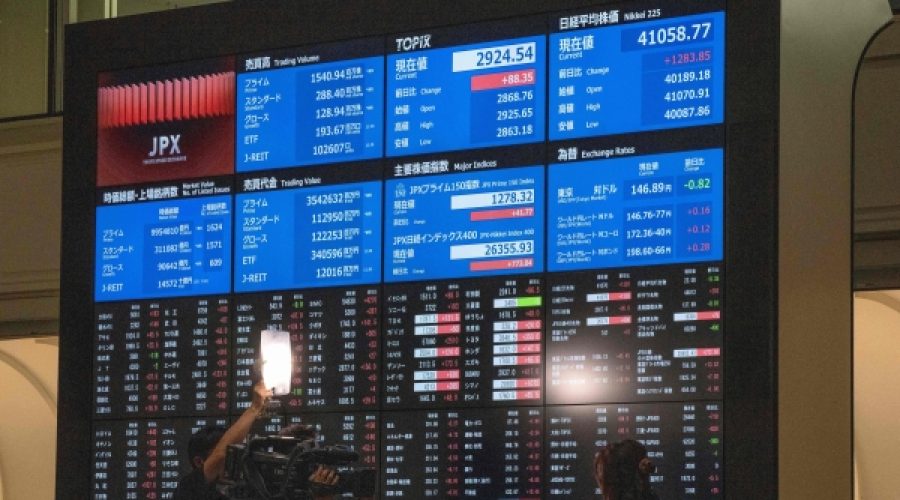Trump’s Tariff Deadline Nears: What Investors and Businesses in Oman Need to Know About Upcoming Market Volatility
Global financial markets are showing signs of increased fragility as the August 1 deadline for finalizing tariff agreements set by President Trump approaches, raising concerns about a potential surge in market volatility.
The recent equity rally has been notably strong and widespread. The S&P 500 and Nasdaq have reached new highs, driven primarily by persistent buying in the leading seven tech stocks. In Europe, the FTSE 100 has hit record levels, while Germany’s DAX reached a peak two weeks ago.
In Asia, Japan’s TOPIX index has risen 6% year-to-date, with half of that gain occurring in the last 24 hours following the announcement of a US-Japan trade deal. Meanwhile, Hong Kong’s Hang Seng index has surged 28% since January, marking a four-year high.
Nigel Green, CEO of the global financial advisory firm deVere Group, warns that despite the current optimism, markets are acting as if risks have disappeared. He emphasizes that this optimism may be misplaced, noting, “The closer we get to August 1st, the more fragile the rally becomes.”
Investors have taken comfort in the relatively mild impact tariffs have had on inflation and economic growth so far. They also point to President Trump’s recent reluctance to fully implement the “Liberation Day” tariff schedule. However, Green cautions that this calm may be premature, stating, “There’s a dangerous assumption that Trump will continue to delay. But unpredictability is a key part of his strategy. Markets don’t need a policy change to falter; an unexpected headline is enough.”
The US dollar, which struggled in the first half of the year, has recently strengthened, buoyed by limited tariff progress and hopes of avoiding harsher measures. Despite this, underlying trade tensions persist. Any sudden tariff escalation or renewed trade conflict could disrupt global markets and revive inflation worries, especially amid Trump’s escalating attacks on the Federal Reserve’s independence.
Green highlights, “The president’s personalized criticism of Fed Chair Jay Powell goes beyond political theater. It undermines global confidence in US institutions. If faith in the Fed’s independence erodes, every asset class could be affected.”
Fund flow data reveals why markets continue to climb despite these risks. US retail investors persistently buy on dips, particularly in tech stocks, largely disregarding traditional valuation metrics. Conversely, institutional investors, especially outside the US, are becoming more cautious, shifting investments towards Europe and Asia where earnings valuations are lower and policy risks appear less immediate.
Green explains, “There is a growing preference for non-US exposure. Some of this is tactical, but much is strategic. Global investors recognize the need for alternatives if sentiment toward the US shifts suddenly.”
Fixed-income markets present mixed signals. While US Treasuries have recovered some ground, doubts remain about their long-term stability if the Fed continues to lose credibility. UK gilts remain relatively attractive, especially for sterling-based investors seeking positive real returns without currency volatility.
Looking ahead to August 1, Green poses a crucial question: “It’s not whether a tariff shock will occur, but whether markets are prepared to absorb it. Currently, it appears they are not.” He warns investors not to underestimate how quickly market conditions could change.
Even a further delay in tariff implementation could unsettle markets if delivered in a confrontational or conditional manner. And if escalation happens, the consequences are likely to be swift and global.
“The stakes are higher than market sentiment suggests,” Green concludes. “Volatility is returning. This should prompt a careful reassessment. Diversification across regions and asset classes is not optional—it is urgent.”
Special Analysis by Omanet | Navigate Oman’s Market
The approaching August 1 tariff deadline and escalating geopolitical risks signal heightened market volatility, posing potential disruption for Omani businesses reliant on global trade flows and investment. Smart investors and entrepreneurs should diversify portfolios across regions and sectors, emphasizing non-US assets and sectors less vulnerable to trade tensions to safeguard against sudden shocks. For Oman, this period highlights the urgent need to build resilient strategies that mitigate exposure to global financial turbulence while exploring emerging opportunities in Europe and Asia.



